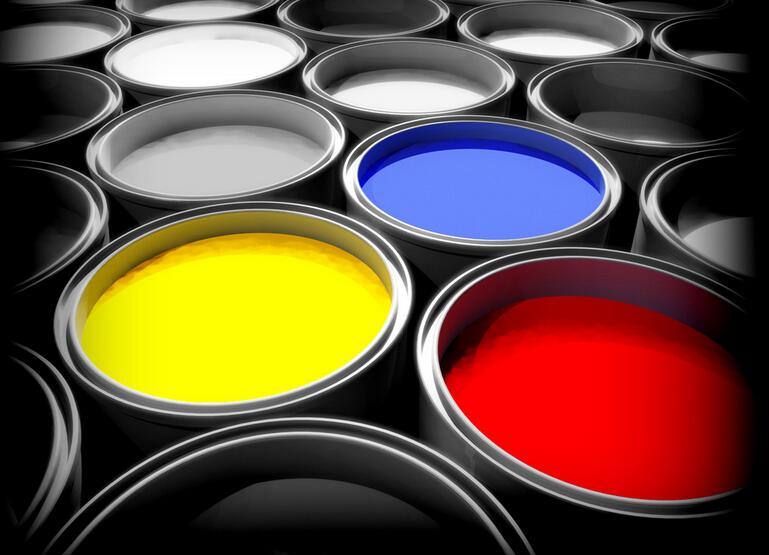Listen to part of a lecture in a studio art class.
聽一段實驗藝術課。
Professor: OK. As you probably know, primary colors are, theoretically speaking, the basic colors from which all other colors can be made.
好了,你們大概也知道,理論上說,原色即能造出其它顏色的基礎色。
But as you'll find out when you start working on your painting projects, the three primary colors – red, blue, yellow – don't always make the best secondary colors.
但當你在做你的繪畫項目時,你們應該會發現,三原色——紅、藍、黃,它們不總能造出最好的間色。
Combining red and blue, you will probably never get a fantastic violet.
把紅和藍混合,很有可能你得不到很漂亮的紫色。

To get a nice violet, you'll have to add white.
要想調出很美的紫色,你還要加白色。
Combining yellow and blue, you will almost never get a satisfactory green.
把黃和藍混合,你很可能永遠都得不出一個令人滿意的綠色。
You are better off using a pure green pigment.
你還不如用純綠色顏料調呢。
The idea of primary colors, and specifically the idea of red, yellow and blue being THE primary colors, didn't exist until about 200 years ago.
直到200年前,原色的概念,即紅黃藍是(三)原色的概念才出現。
Until then, the dominant theory about color was one that had been proposed by Isaac Newton.
此前,關于顏色的主流理論是艾薩克·牛頓提出的。
Newton gave a scientific and objective explanation of colors.
牛頓對顏色做出了科學且客觀的解釋。
He used a prism to break white light down into the various colors of the spectrum.
他用棱鏡把白光分解成光譜上不同顏色的光。
And he theorized, rightly so, that different colors are essentially different wavelengths of light.
然后他提出理論,不同的顏色本質上是不同波長的光。
But he made no mention of primary colors.
但他完全沒有提及原色。
That idea came from, or was at least published by a man named Johann Wolfgang von Goethe.
這個概念是由約翰·沃爾夫岡·馮·歌德提出的,或至少說是由他出版的。
Goethe was a well-known author.
歌德是一位著名作家。
He wrote many famous novels, plays, poems.
他寫了很多著名小說、戲劇和詩歌。
So why did he start thinking about colors?
那么他為什么會開始思考顏色呢?
Well, Goethe was part of the Romantic Movement in western literature.
歌德也參與了西方文學界的浪漫主義運動。
And he was a Romantic, through and through, meaning that he explained objects and phenomena in terms of the spiritual, emotional impact they had, as opposed to explaining them in terms of their scientific nature.
他自己就是徹徹底底的浪漫主義者,也就是說,他以其精神、情感影響層面來詮釋事物和現象,而不是以其科學本質來解釋。
He rejected an objective understanding of color, in favor of a more subjective understanding.
他不接受對顏色的客觀理解,更支持主觀理解。
He believed that when we see color, it stimulates our emotions.
他認為當我們看見顏色,情感就被激發出來。
And different colors appeal to or inspire different emotions in different people.
不同的顏色對不同的人能激發不同的情感。










